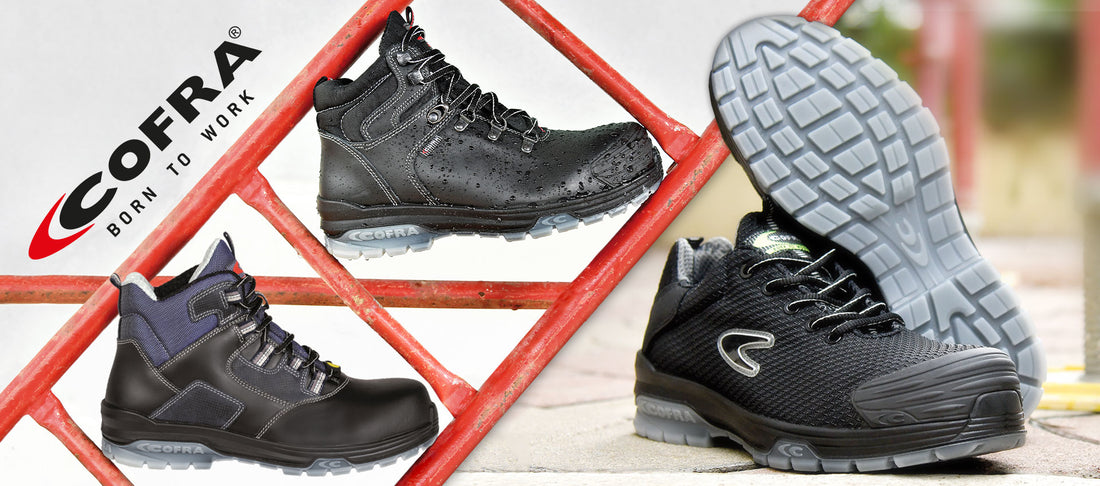When choosing footwear for work, it is very important that the shoes are safe and comfortable.Work boots will be worn throughout the working day, so footwear should be chosen responsibly.
In order to know how to choose safety footwear, it is necessary to understand the regulations governing safety footwear, such as the symbols on each shoe tongue or the EN ISO 20345 standard (the standard applicable to safety footwear throughout Europe).
For this reason, in this article we explain everything you need to know about work footwear rules in a simple and quick way.
PROPERTIES THAT PROFESSIONAL SAFETY FOOTWEAR MUST HAVE BY RULES
There are different types of work shoes.Depending on the protection category, there are two main types of footwear:
- Normal footwear for work.In this case, the forefoot and insole of the shoe are not shock or puncture resistant, but they have the appropriate non-slip sole and water-repellent properties.
- Safety work footwear (EN ISO 20345): It has a minimum impact resistance of 200 joules and a compressive strength of at least 15 kN at the toe cap, and may also have other additional properties (antistatic, etc.).
Professional footwear must have the appropriate properties to be considered safety footwear and protect the wearer from injury or prevent any damage from fire or chemical agents and other factors.
1.General requirements for safety footwear - (SB category):
 |
 |
 |

|
| Impact resistance - 200J, compression - 15 kN | The materials used are safe, strong and have the right properties | Ergonomic and comfortable design | Slip resistance (ceramic coating / soapy water) |
2. Additional Requirements
 |
 |
 |
 |
 |
 |
| Antistatic | Protection of the Malleoli area | Insulated sole (cold) | Insulated sole (heat) | Shear resistance | Energy absorption in the heel area |
 |
 |
 |
 |
 |
 |
| Resistance to fuel and oils | Metatarsal guard | Water resistance | Water resistance (upper materials) | Electrostatic conductive footwear | Punch resistance (metal insole) |
 |
 |
 |
 |
 |
|
| Puncture resistance up to 4.5 mm (composite insole) |
Punch resistance up to 3 mm (composite insole) |
Abrasion resistance in protected areas | Sole heat resistance | Slip resistance (ceramic surface + oil) |
3.Protection Category Names
S1 |
S1P S1PL S1PS |
S2 |
 |
 |
 |
S3 S3L S3S |
S6 |
S7 S7L S7S |
 |
 |
 |
After evaluating what is described above, below are the most common variants of work footwear protection categories, please take a look:
- SB category
This category indicates that the footwear meets the basic criteria of resistance and protection of the toe area.S - means safety footwear, followed by a letter or number indicating its type.B - means main.
- S1 category
Category S1 footwear has additional features such as closed ankle section, anti-static footwear (A), hydrocarbon resistant (FO) and energy absorbing heel section (E) as well as meeting basic requirements (SB).
- S2 category
The S2 category indicates that the footwear meets the standards of the S1 category (and therefore the SB category) and also ensures resistance to water and liquid absorption in the upper part of the footwear.
- S3 category
Footwear in this category meets the standards of the S2 category (and therefore the SB and S1 categories) and also has a solid sole and puncture resistance.
- Category S6
This category refers to category S2, where the water resistance is the entire shoe or a larger part of the shoe than just the upper.
- S7 Category
All boots in the S3 category and with water resistance throughout the boot construction.
MARKING OF SAFETY SHOES ACCORDING TO STANDARDS
In addition to the features listed above, other requirements may be imposed on protective footwear, which are shown on the product label with the corresponding symbol:
For protective footwear:
- P - Puncture resistance: The footwear has insoles (which can be metal, textile or composite to prevent puncture) with a puncture resistance measured at a force of 1100 N.
- C - Conductive footwear: its electrical resistance is between 0 and 100 kilohms.Designed to break up electrostatic charges.
- A - Antistatic footwear: designed to dissipate electrostatic charges between 100 and 1,000 kilohms.
- HI - Heat resistance of the sole: insulation of the sole of the footwear against heat up to 150ºC.
- CI - Cold resistance: ensures insulation of the sole of the footwear from cold down to -17ºC.
- E - Energy absorption in the heel area: this area must be able to absorb at least 20 J of energy.
- M - Metatarsal protection: the footwear has additional metatarsal protection (the upper part of the shoe).
- AN - Ankle protection: The footwear has additional ankle protection.
- CR - Cut resistance: the shoe has a protective zone resistant to cuts
- WR - Waterproof: The entire shoe must be waterproof.
Only the upper part of the shoe:
- WRU - Resistance to water absorption and penetration: The upper part of the shoe is resistant to water penetration and absorption.
Shoe Sole Only:
- HRO - resistance to contact heat: the sole can withstand contact heat up to 300ºC.
- FO - Resistance to hydrocarbons: the sole of the footwear is resistant to contact with hydrocarbons.This is the minimum requirement for safety footwear.
- Another key requirement is slip resistance, which is discussed in more detail below.
SLIP RESISTANCE (BASIC REQUIREMENTS)
The slip resistance criteria for protective work shoes are as follows:
SRA - Slip resistance on ceramic tile flooring with sodium lauryl sulfate.
SRB - Non-slip on steel floors with glycerin.
SRC - Slip resistance on ceramic tiles with sodium lauryl sulfate and on steel floors with glycerin.
You can view our range of work boots here:
https://dudu.lt/collections/work-shoes

